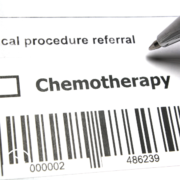Tag Archive for: AML mutations
What AML Mutations Are Associated With Adverse Outcomes?
What AML Mutations Are Associated With Adverse Outcomes? from Patient Empowerment Network on Vimeo.
Which acute myeloid leukemia (AML) mutations are linked to adverse outcomes? Dr. Naval Daver from the University of Texas MD Anderson Cancer Center shares insight..Learn about different mutations, treatment options, and the importance of testing.
[ACT]IVATION TIP from Dr. Daver: “Check for mutations to the frontline setting…absolutely, these include FLT3, IDH1, IDH2, TP53, and NPM1 MLL this list will likely continue to grow as we get more targeted therapies in immunotherapies and find benefit in particular subsets, but also in the relapse setting to not depend on the baseline molecular profile because the lipids actually can change. We do see AML as a multiclonal disease, and there can be emergence and escape of different clones, so to check again in the relapse for those same mutations and both in the frontline, the relapse setting.“
Related Resources:

Long-Term Effects Acute Myeloid Leukemia Patients Should Know |

|

|
Transcript:
Art:
Dr. Daver, what mutations are associated with adverse outcomes in AML? What are the best time points to check for these mutations, and what therapeutic options do you consider for patients or harboring these mutations?
Dr. Naval Daver:
This is very, very important, a mutational targeted therapy is probably the biggest overarching change that has occurred in acute myeloid leukemia in the last decade, and of course to implement those therapies. One has to know the mutational profile, the five big mutations that whenever I speak to my patients in clinic today that I talk about wanting to know before I embark on any therapy are FLT3 or FLD3, IDH1, IDH2, TP53, and now, more and more recently, NPM1 or MLL, actually six different mutations, cytogenetic operations, and the reason is that we do have targeted therapies for these mutations, some of these targeted therapies are already approved in the frontline setting like the FLT3 inhibitors, some of these are being evaluated in ongoing Phase III studies like the CD47 magrolimab for TP53.
As well as the menin inhibitors now in frontline setting in combinations of intensive chemo or HMA venetoclax (Venclexta), or MLL NPM1 but I think identifying these targets and getting the patients on the right clinical trial personalized to that target for them has historically shown significant improvements, 20 to 30 percent survival improvements in FLT3, IDH and potentially for the TP53 MLL NPM-1 so definitely on newly diagnosed, I would recommend getting that information and then going on to either standard of care the drugs already approved or clinical trial that incororates that targeted therapy or immunotherapy for a target in the relapse setting the two most important mutations today, or the three most important are FLT3, then IDH as well as MLL NPM1.
Three inhibitors like gilteritinib (Xospata) are already approved. Similarly, IDH inhibitors and combinations of gilteritinib or IDH with venetoclax are really showing very good outcomes, even in relapse three, which about 20 years ago was a very, very, very poor outcome. T
oday, we can get up to 80 percent of these patients to remission, half of them into transplant, and a good number may have long-term survival post-transplant, so it’s very important to not mislead to an IDH1, IDH2 to a relapse setting.
And then now with the menin inhibitors we’re also looking in all our patients for MLL rearrangement, NPM1 in relapse, because this could open the door for menin inhibitor-based therapy, which again can give up to 50 percent remission and a path to transplant. Now many patients at MD Anderson who have gone through too many inhibitors, transplant and are alive and ongoing at two and three years.
So the bottom line is, it’s important you check at my activation tip for this question is it’s important to check for mutations to the frontline setting…absolutely, these include FLT3, IDH1, IDH2, TP53, and NPM1 MLL this list will likely continue to grow as we get more targeted therapies in immunotherapies and find benefit in particular subsets, but also in the relapse setting to not depend on the baseline molecular profile because the lipids actually can change.
We do see AML as a multiclonal disease, and there can be emergence and escape of different clones, so to check again in the relapse for those same mutations and both in the frontline, the relapse setting.
To try to get on to a therapy, whether it’s approved or clinical trial that incorporates those targeted therapies, which has historically shown a significant improvement in both response and long-term survival.



